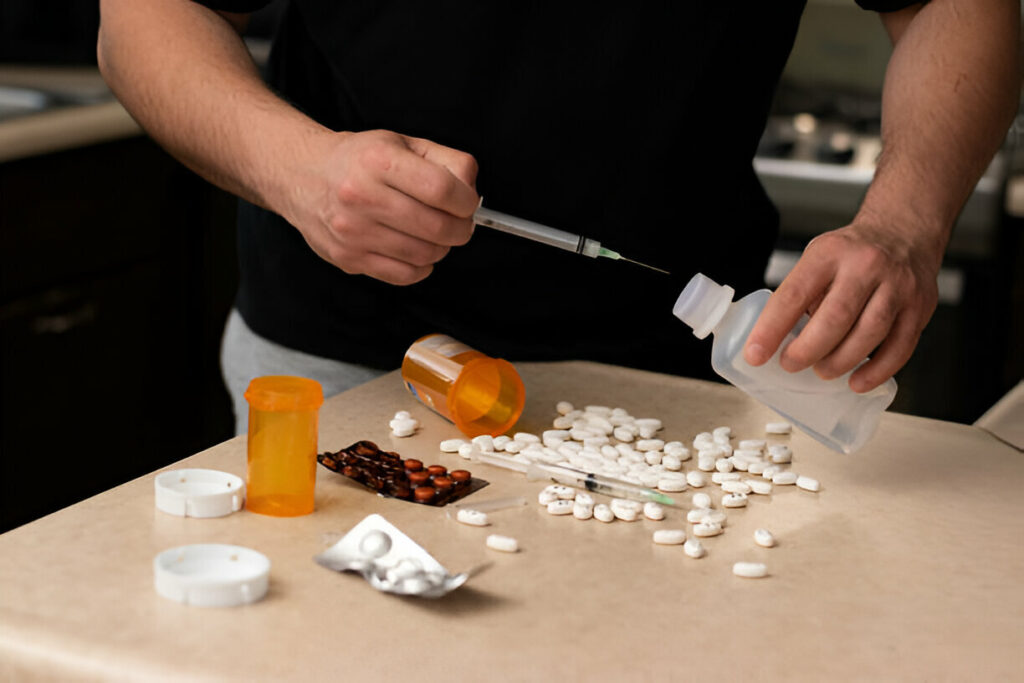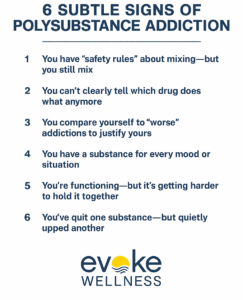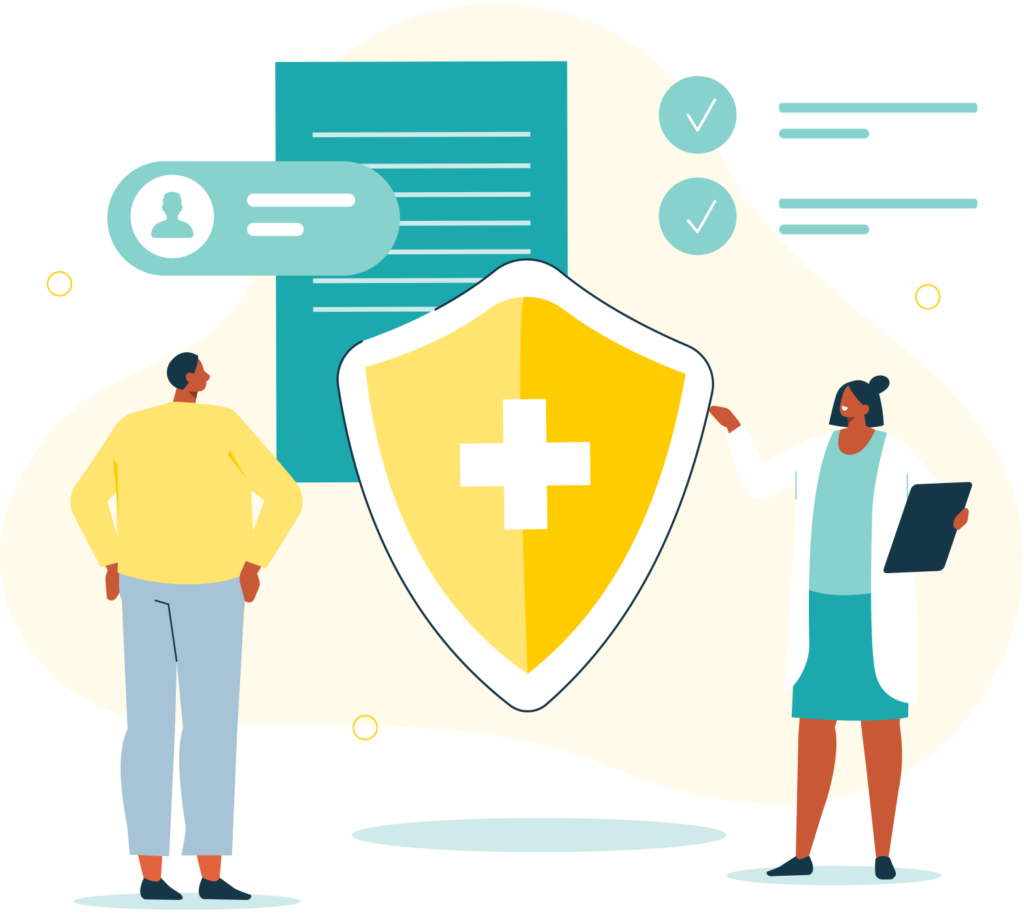It doesn’t always look like rock bottom.
For many people—especially those who’ve tried treatment before and walked away thinking, “That didn’t help,” or “I guess I’m just different”—the signs of polysubstance addiction don’t come with a flashing red light. They come in quieter forms: routines that shift, energy that drains, excuses that start stacking up in your head.
Polysubstance addiction isn’t always obvious. Sometimes, it hides behind productivity. Sometimes, it masquerades as “just taking the edge off.” And sometimes, it keeps people stuck in a cycle where they don’t quite feel sick enough to get help, but don’t quite feel okay either.
This blog isn’t here to diagnose you. It’s here to hold up a mirror—gently, honestly—and say: “If this feels familiar, you’re not alone. And you’re not broken.”
1. You Have “Safety Rules” About Mixing—But You Still Mix
Maybe you’ve told yourself, “I never drink when I take pills.” Or “I’ll only use this if I haven’t smoked weed.” But then the rules get fuzzy. It’s a holiday. Or a bad day. Or someone offers you something you weren’t planning on.
When you find yourself needing rules to manage your use—or bending those rules regularly—it’s often a sign that your relationship with substances is no longer casual. It’s strategic. Protective. And potentially dangerous.
Polysubstance addiction often shows up in these internal negotiations. “As long as I don’t mix X with Y, I’m fine.” But if those boundaries are slipping? That’s not discipline. That’s a warning.
2. You Can’t Clearly Tell Which Drug Does What Anymore
When someone is using multiple substances, the effects start to blend. You might feel anxious and reach for something—only to realize later that you already took something else. Or you might notice that it’s taking more to feel normal, but you’re not sure which substance is “wearing off.”
This isn’t just forgetfulness. It’s a physiological and psychological sign of dependence. When substances overlap, your brain and body lose the ability to clearly associate cause and effect. That confusion creates risk—especially when doses and interactions become harder to track.
3. You Compare Yourself to “Worse” Addictions to Justify Yours
If you’ve ever thought, “At least I’m not doing meth,” or “It’s not like I’m shooting up,” you’re not alone. It’s a mental strategy people use to create distance between themselves and the idea of addiction.
But here’s the truth: addiction isn’t defined by how “bad” the drug is. It’s defined by how it impacts your life, your brain, your body, and your sense of control.
If you need to justify your use by pointing to something more extreme, that’s often your intuition whispering, “Something might be off.”
4. You Have a Substance for Every Mood or Situation
One to sleep. One to party. One to study. One to calm down. One to eat. One to forget.
When your emotional landscape is being managed by a rotating cast of substances, it’s more than preference—it’s reliance. And polysubstance addiction thrives in this kind of compartmentalization.
This pattern often sneaks up slowly. What starts as “occasional help” becomes a silent requirement. If you’re rarely navigating your day without turning to something—even if it’s “just weed” or “just a little Adderall”—your body may no longer be calling the shots.
5. You’re Functioning—But It’s Getting Harder to Hold It Together
You’re still going to work. Still paying your bills. Still showing up to most things.
But you’re exhausted. Snapping at people more. Forgetting things. Zoning out during conversations. Planning your day around when you can use again. Telling yourself, “I just need one good weekend to reset.”
High-functioning addiction is still addiction. And polysubstance addiction can create the illusion of control because different substances cover for each other. One brings you up, the other brings you down. But over time, the juggling act gets shakier. And pretending starts to take more energy than it gives.
6. You’ve Quit One Substance—But Quietly Upped Another
You might have stopped drinking for a while—but now you’re smoking more. Or maybe you quit opioids, but your benzo use has doubled. You tell yourself you’re still in control because technically, you’re not doing the thing you were worried about.
But swapping one substance for another doesn’t reset the risk. In fact, it can mask the deeper patterns that drive addictive behavior.
Polysubstance addiction is rarely about one drug. It’s about how you’re relating to substances overall. When the goal is comfort, numbness, or escape, your brain doesn’t care which chemical gets the job done—it just wants relief.
Why It Matters in Columbus, Ohio
At Evoke Wellness Ohio, we’ve worked with countless clients from Columbus and surrounding areas who didn’t think they “qualified” for treatment because they weren’t using a single drug heavily.
But here’s what we’ve seen again and again: when people finally name what’s really going on—the mix, the patterns, the fatigue—things can finally start to shift.
Our polysubstance rehab program in Columbus is built to meet people exactly where they are—not where they think they should be. Whether this is your first time reaching out or your fifth, we’re ready to help you build a path that actually fits.
FAQs About Polysubstance Addiction
What is polysubstance addiction?
Polysubstance addiction is when someone regularly uses more than one drug—either at the same time or within overlapping periods—and becomes physically or psychologically dependent on the combination.
Is it still addiction if I only use a little of each?
Yes. Addiction isn’t always about how much—it’s about how it affects your brain, behavior, and life. Even small amounts, when used frequently or in combination, can signal a pattern worth paying attention to.
Can I be addicted even if I’m still “functional”?
Absolutely. Many people with polysubstance addiction keep up appearances for a long time. But functioning isn’t the same as thriving. If your use is controlling more of your life than you want to admit, it’s time to consider support.
What makes polysubstance addiction dangerous?
Mixing drugs—especially without medical guidance—can lead to unpredictable interactions. Some combinations increase overdose risk, while others can damage organs, cloud judgment, or worsen mental health symptoms.
What if I already tried treatment and it didn’t work?
That doesn’t mean you failed—or that help isn’t possible. Sometimes it takes trying a different approach, a different team, or simply starting again when you’re ready. At Evoke Wellness Ohio, we don’t expect perfection. We meet people where they are, including skeptics.
Let’s Talk—No Pressure
If this list stirred something in you, that doesn’t mean you’re broken. It might just mean your body and mind are trying to tell you something’s off.
You don’t have to have a rock-bottom story. You don’t need a label. And you don’t have to do this alone.
Evoke Wellness Ohio offers compassionate, flexible treatment for people navigating complex or layered substance use. Whether you’re curious, cautious, or totally over it all—we’re here.
Call (866) 430-9267 to talk with someone who gets it. Or learn more about our Columbus-based polysubstance treatment program.



